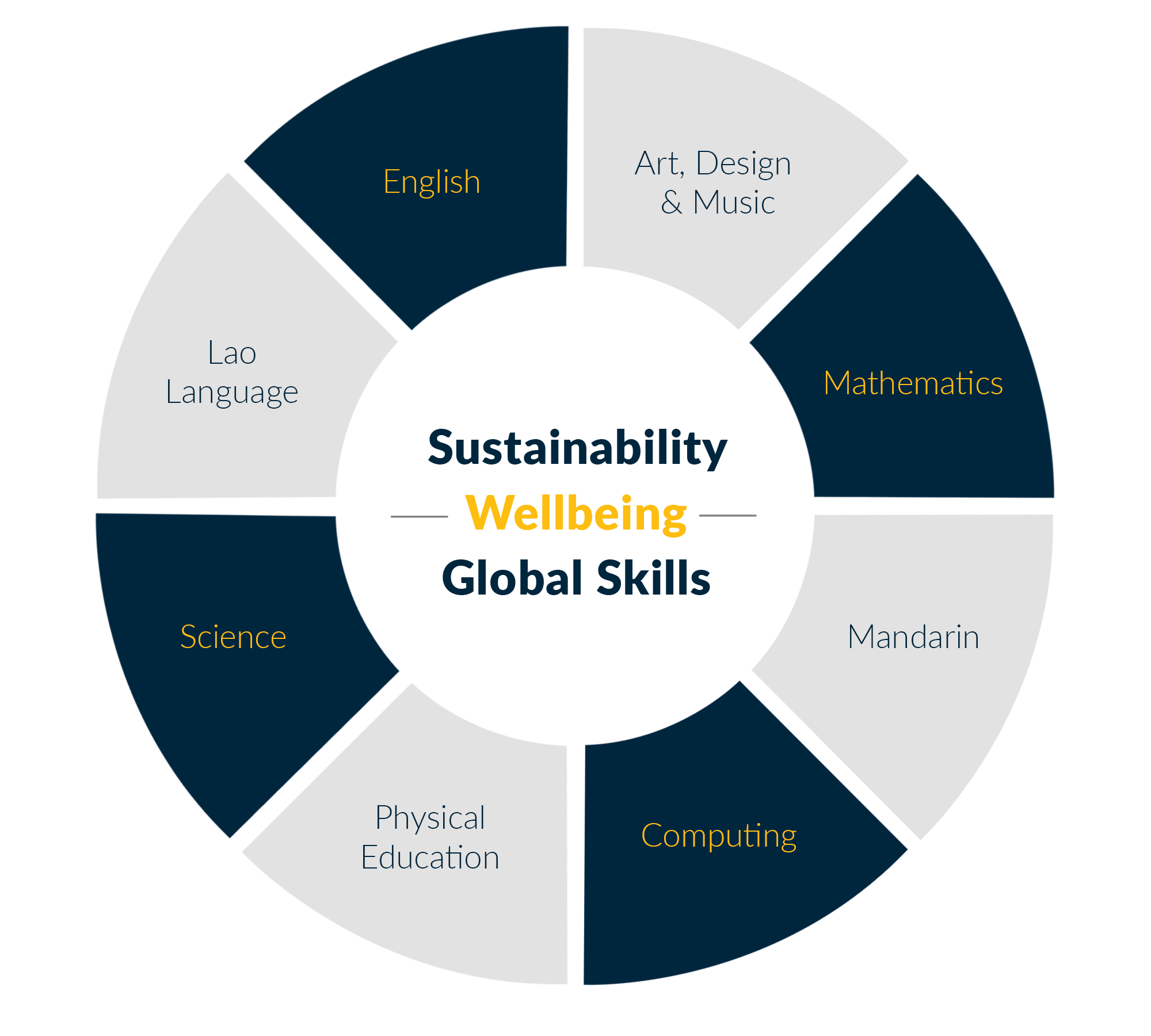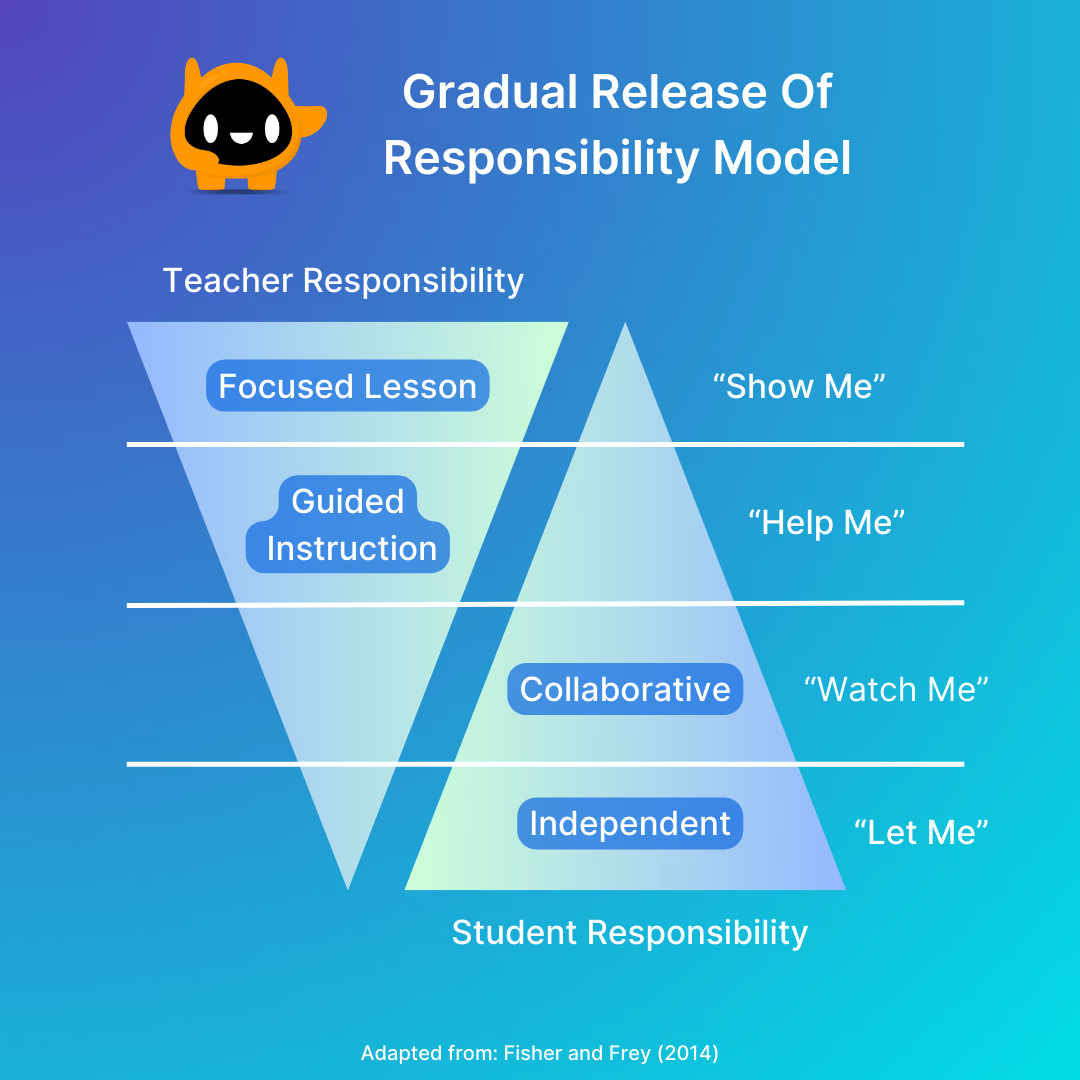Primary Department
The Primary department consists of Year One to Year Six.
We are two-form entry school, having two classes at each year level.
Year One is capped at 24, while Year Two - Year Six can accommodate up
to 25 pupils.
The Oxford International Curriculum (OIC) provides the cornerstone of our school curriculum.
HISV delivers the following OIC subjects:
- English
- Mathematics
- Science
- Computing
- Global Skills Projects
- Sustainability
- Wellbeing
The following subjects’ programmes of study are created internally:
- Art & Design
- Physical Education
- Lao Language
- Mandarin Language
- Music
This is a modern curriculum that puts student wellbeing and global skills at its heart.
We believe that success is contingent on both academic performance and emotional wellbeing.
Wellbeing is concerned with establishing and maintaining a healthy lifestyle, developing positive relationships and maintaining an optimistic state of mind.
The subject develops awareness of how our emotions affect us and provides strategies to deal with negative feelings and behaviour.
Global Skills Projects (GSP) focus on the processes we can use to solve problems.
Children learn the benefits of clear communication, collaboration and teamwork to define goals and strategies. They work together and gradually build global awareness.
By enabling our pupils to better understand themselves and others as well as the serious issues facing our world, we hope to elicit kindness and compassion.
These two components, along with lesson activities that promote critical and creative thinking, are integrated into all core subjects:
- English
- Mathematics
- Science
- Computing
HISV is concerned with protecting the environment by promoting good practices in both words and actions. A new subject: Sustainability was added in 2024.
Wellbeing includes a ‘taking care of the world’ strand. GSP provides the opportunity to act upon the desire to protect the world that provides for us. Sustainability gives us the knowledge.
Pupils also receive instruction in Lao Studies, Mandarin as well as Physical Education, Music and Art.

Progressing Through the Curriculum
We assess - using both formative and summative assessments - a pupil’s present abilities and plan accordingly.
It is important that children are challenged with activities that are within their reach via clear instruction and well-pitched supportive activities.
Methodology
By ‘within reach’ we mean the Zone of Proximal Development. The ZPD was a key construct in Lev Vygotsky's theory of learning and development. The Zone of Proximal Development is defined as the space between what a learner can do without assistance and what a learner can do with adult guidance or in collaboration with more capable peers.
It is based on a student’s current developmental level and potential developmental level.
By ‘meaningful and helpful activities’ we mean scaffolding. Scaffolding is a teaching method that involves providing students with temporary support to help them learn and master tasks, and then gradually removing that support.
The first steps in the instructional scaffolding process may include explaining the concept at the students’ current level. The teacher can model the problem-solving process or present an approach for accomplishing a task. After this, the scaffolding begins. The teacher then supports students by, for example:
- Breaking the directions into small chunks
- Talking students through the task while they complete it
- Grouping students together to talk through the task and support each other
- Referring to models of the task where students can gather additional information
- Giving students tips and tricks while they are working
At HISV, we refer to Barak Rosenshine's Principles of Instruction, which are a set of ten strategies that teachers can use to help students master a skill or body of knowledge.
"I Do, We Do, You Do" is a scaffolding teaching model, also known as the Gradual Release of Responsibility:
- I Do: The teacher models how to complete a task or solve a problem.
- We Do: The teacher and students work together to complete the task or solve the problem.
- You Do: The students work independently to complete a similar task or solve a similar problem.

Image source: Fisher, D., & Frey, N. (2008). The Gradual Release of Responsibility Model. Educational Leadership, 65(8), 32-37.
Therefore, to help a student learn and develop a new concept or skill, the teacher targets the student’s zone of proximal development and provides support that eventually tapers off as the student grows in knowledge and independence.
There are other pedagogical methods such as guided discovery learning, which can be utilized in any subject. Here, pupils also acquire knowledge, build conceptual understanding and develop skills but do so without being told explicitly.
Guided discovery, also known as an inductive approach, is a technique where a teacher sets the scene, and provides some guidance and feedback. It could be as simple as discovering what happens when colours are mixed in Art or identifying prime numbers by laying out beans in rows and columns, and discovering that some numbers can't be arranged in complete rows and columns. In Science, pupils make observations of burning candles, form ideas and hypotheses, and test them.
Initiatives
Each year, we review our department and establish initiatives to make improvements.
These may involve curriculum goals such as improving spoken English and handwriting or developing a clearer notion of what success means in each lesson.
Some are based around soft skills such as collaboration and discussion or executive functioning skills such as being well organised at school or self-regulating behaviour.
Self-efficacy - the belief in one’s capabilities to organise and execute the courses of action required to manage prospective situations (Bandura 1999) is one of the soft skills that is most backed up by science to have an impact on success.
It plays a major role in how goals, tasks, and challenges are approached.
It has a close association with self-esteem - how we feel about or value ourselves.
If pupils have a high sense of self-efficacy, we're more likely to take on new challenges and persist in the face of setbacks: leading to success.
Transition from Foundation 2 to Year One
Most children enter primary after having completed Foundation 2, allowing for a smooth transition. We make this a little easier by retaining some of the F2 practices and routines in the first 6-7 weeks of Year One.
Transition from Year Six to Year Seven
Our Year Six pupils have a half-day visit to the Secondary school campus in June. They meet their homeroom teacher and are provided with important organisational information. The pupils are escorted on a tour to see the building and its amenities. They meet their subject teachers and take part in three lessons: English, Mathematics and Science. Finally, they are assigned a locker.
Staff
Our teachers are fluent English speakers and qualified to international school standards. They receive continuous training to keep abreast of developments within the field of education. Each teacher, up to Year Five, is supported by a teaching assistant (TA). One TA works with both Year Six classes.
A Reading Support Teacher provides further assistance where needed.
Along with a dedicated school manager and office staff, we are all working towards the same goal of caring for and educating the children at HISV.
Inclusion (Please see Admission for further information)
Just as in EYFS and Secondary, the primary school embraces diversity and fosters a culture of respect and understanding, promoting inclusion in our curriculum and school life. Every child is unique and valuable, and we are committed to creating an environment where all children feel welcome, valued, and supported. We have qualified special needs staff who recognize and are able to meet the needs of learners with mild to moderate learning and behavioral difficulties.
(Please note that we plan to extend this department for 2025-26)
We advise parents about accessing outside professional support when we require a deeper understanding of a child’s circumstances and ways to help them. We promote and celebrate diversity during our yearly Inclusion Week.